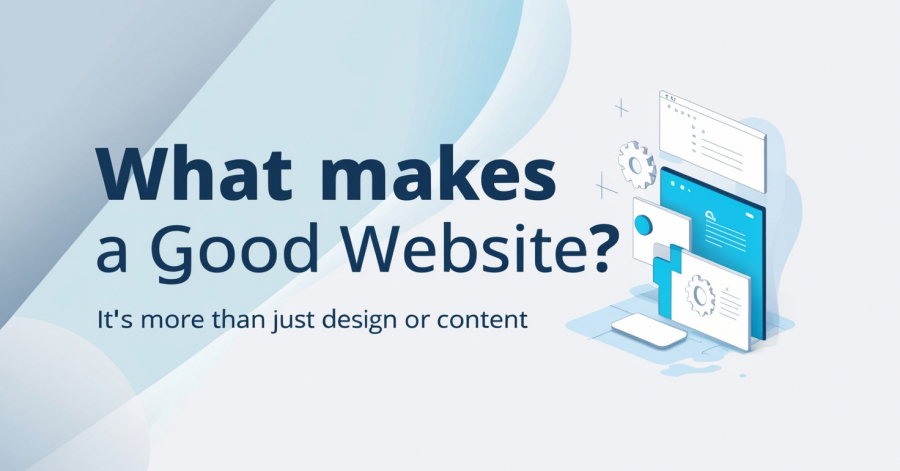The Importance of KPIs in Web Development
A website should not exist simply for the sake of being online—it must serve a strategic business purpose. Whether the goal is to generate leads, increase sales, build brand awareness, or provide customer support, KPIs should be clearly defined before design and content even come into the picture.
Common website KPIs include:
- Conversion Rate – The percentage of visitors who take a desired action, such as signing up for a newsletter or completing a purchase.
- Bounce Rate – How quickly visitors leave after landing on a page, which can indicate issues with engagement or content relevance.
- User Engagement – Metrics such as time spent on page, scroll depth, and interactions with site elements.
- Lead Generation – The number of form submissions or inquiries received.
- Search Engine Ranking – How well the website ranks on Google and other search engines for relevant keywords.
A successful website isn’t just about looking good or having great content—it’s about meeting these objectives effectively.
Consulting-Led Web Development: Thinking Beyond Design
To create a website that truly delivers results, a strategic consulting approach is essential. This requires deep thinking and analytical processes to define key aspects such as:
- Unique Selling Proposition (USP): What sets the business apart from competitors? Why should customers choose this business over others?
- Competitor SWOT Analysis: Understanding competitors' strengths, weaknesses, opportunities, and threats helps position the website effectively.
- User Persona Development: Who are the target customers? What are their pain points, motivations, and behaviors?
- Human Psychology in Design and Content: Understanding how users make decisions can help craft a website that attracts, retains, and engages visitors in a meaningful way.
We approach by focusing on the Creativity Out of Challenges concept. Our expertise lies in repositioning companies to achieve tangible results, leveraging strategic insights, innovative design, and business-driven technology solutions.
By addressing these factors, a website can be designed not just to impress, but to guide users toward desired actions and outcomes.
The Customer Journey: Mapping Content and Design for Maximum Impact
A well-planned website doesn’t just throw information at visitors—it takes them on a journey. From the moment a user lands on a site, they should be guided seamlessly through a structured experience that educates, builds trust, and persuades them to take action.
How to Structure an Effective Customer Journey:
- Awareness Stage – Users are introduced to the brand. The homepage and landing pages should clearly communicate what the business does and why it matters.
- Consideration Stage – Users explore offerings. Detailed service or product pages, testimonials, and case studies help build credibility.
- Decision Stage – Users take action. A well-optimized call-to-action (CTA), clear navigation, and trust signals (such as reviews and security badges) facilitate conversions.
- Retention & Engagement – Keeping customers engaged through valuable content, email marketing, and community-building ensures long-term loyalty.
- Aligning Content and Design with Business Goals - Design and content are not separate entities—they must work together to support the website’s objectives. Every design element and piece of content should serve a purpose, whether it’s to educate, persuade, or drive action.
Key Design Elements for a High-Converting Website:
- Clear Navigation: Users should find what they need quickly and intuitively.
- Responsive Design: The site should be mobile-friendly and perform well on all devices.
- Visual Hierarchy: Important messages should stand out using size, contrast, and placement.
- Loading Speed Optimization: Slow websites lead to high bounce rates, affecting engagement and conversions.
Content Best Practices:
- Clarity and Simplicity: Avoid jargon and ensure messaging is easy to understand.
- Storytelling Approach: Engage users emotionally by telling a compelling brand story.
- SEO Optimization: Use relevant keywords and high-quality content to improve search rankings.
- Strong Call-to-Actions (CTAs): Guide users toward desired actions with clear and persuasive CTAs.
A good website is not just about looking beautiful or having great content—it’s about hitting the right KPIs through strategic thinking, consulting, and execution. By defining clear goals, understanding the target audience, and aligning content and design with business objectives, companies can create websites that not only attract visitors but convert them into loyal customers.
For businesses looking to build or revamp their website, the focus should be on a consulting-led approach that ensures every aspect—from design to content—serves a strategic purpose. Oasis Web Asia excels in this approach, helping businesses reposition themselves for success by turning challenges into creative opportunities. Only then can a website truly be considered "good." Feel free to contact us for a sharing session into producing results for your website as route to performance.





